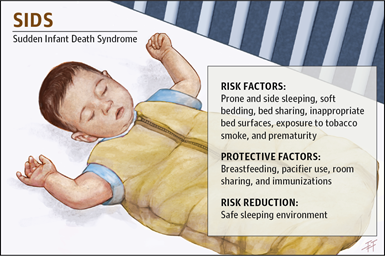

19th May 2022 (6 Topics)
Context
A team of researchers in Australia has identified a biochemical marker in the blood that could help identify newborn babies at risk for the Sudden Infant Death Syndrome (SIDS).
About
Sudden Infant Death Syndrome (SIDS):
- Sudden infant death syndrome is the unexpected death of an apparently healthy infant.
- It usually occurs while the baby is asleep, although in rare cases, it can also occur while the child is awake.
- The condition is also called “cot death”.
- Newborn babies delivered prematurely or with low weight at birth are believed to be at a greater risk of SIDS.
- The exact cause of SIDS is unknown, although revelations from the new research look promising.
- According to the NHS website, parents can reduce the risk of SIDS by not smoking while pregnant or after the baby is born and ensuring that the baby is placed on their back when they sleep.

Key findings of the research:
- According to the findings of the research, babies who died of SIDS showed lower levels of the butyrylcholinesterase (BChE) enzyme shortly after birth.
- A low level of the BChE enzyme affects a sleeping infant’s ability to wake up or respond to their environment.
The role of BChE:
- BChE plays a major role in the brain's arousal pathway.
- The researchers believe its deficiency likely indicates an arousal deficit, which reduces an infant's ability to wake or respond to the external environment, causing vulnerability to SIDS.
- The enzyme is an important part of the autonomic nervous system of the body and controls unconscious and involuntary functions.
More Articles

